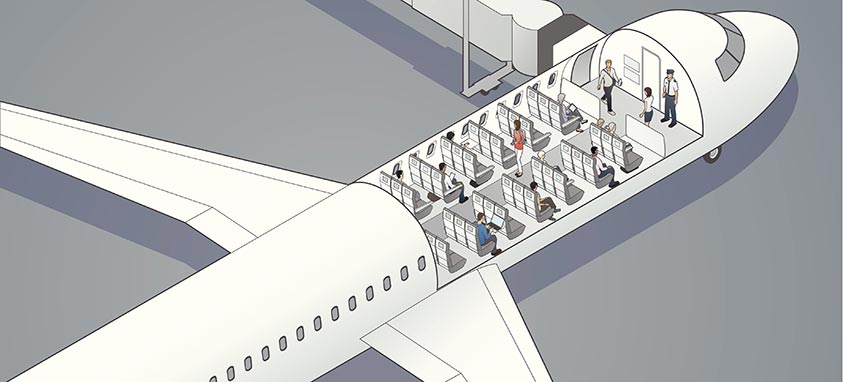Responding to concerns presented by a consumer advocacy group, a federal appeals court has ruled that the Federal Aviation Administration (FAA) must reconsider its decision not to regulate the size of airline seats as a safety issue.
A three-judge panel from the U.S. Court of Appeals for the District of Columbia Circuit instructed the FAA to “adequately address” a petition filed by the advocacy group Flyers Rights claiming that seats are too small and bunched too closely together. This increases the risk of passengers developing vein clots and slows down emergency evacuations, the group claimed.
Arthur Alan Wolk, a lawyer specializing in aviation law, told The New York Times that the court’s ruling is unprecedented.
“This is the first case I have seen where an organization has successfully challenged the FAA’s basically being asleep at the switch and not fulfilling its safety responsibilities adequately,” he said.
The FAA previously determined that seat spacing was a matter of comfort, not safety. But last week, Judge Patricia A Millett stated that the FAA had cited tests that either did not appropriately address seating space or omitted them entirely because it said they were propriety. She called the issue “the Case of the Incredible Shrinking Airline Seat.”
The Flyers Rights group contends that as Americans continue to get bigger, airline seats continue to shrink. Their petition stated that since the early 2000s, the distance between seats from row to row had decreased from 35 to 31 inches and that in the past decade, the average seat has shrunk from 18.5 inches to 17 inches.
Also, the pitch—the distance between the head rest of one seat the that of the seat in front of it—has been steadily shrinking. Low-cost carrier Spirit Airlines provided a 28-inch pitch, which leaves little legroom for the average passenger. American Airlines had planned to order new Boeing 737 jets with just 29 inches of pitch in the last three rows to make room for an extra row of premium-priced seats toward the front of the planes. After objections from passengers and flight attendants, the airline increased the pitch to 30 inches—still a tighter fit than on its current planes.
The FAA issued a statement saying that it was “studying the ruling carefully and any potential actions we may take to address the court’s findings.” The agency could again deny the petition, but the court warned that it then would need to have an “appropriate record support for its decision.”
In 2016, the Senate and House rejected legislation that would have mandated the FAA to establish minimum seat-size standards. A bipartisan group of lawmakers resurrected a similar bill in March, but no vote has taken place.




